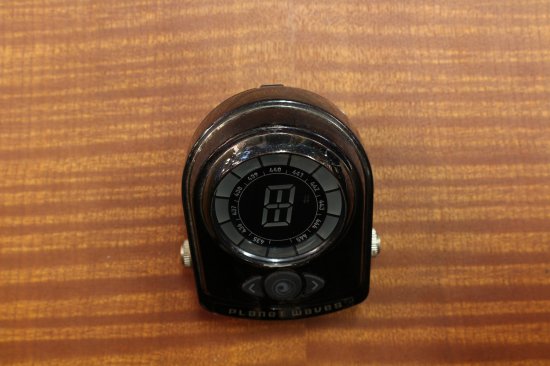

Unless you have another method to bypass your signal, everyone in the house will hear you tune up. First, though it does allow pass-through tuning, there is no muting feature. On stage, however, it's not as natural a fit. If your band-mates demand absolute accuracy, it may also be for you.

When you consider its accuracy (about 15 times more accurate then a standard tuner) it's a great tool for such applications. The Tru Strobe is best suited for use as a desktop tuner, and would be right at home in the studio or a luthier's shop. Color did not matter to me, but some may find one or the other more to their liking. Presumably, as blue LEDs become available in sufficient quantity, they'll begin shipping with them. According to Planet Waves, this is due to a shortage of blue LED's. Though most catalogs show the True Tone tuner with blue lights, mine had red. When the lights stop moving, you are in tune. The faster the lights move, the more out of tune your instrument is. If the lights are moving clockwise, the note is too sharp. When you pluck a string on your guitar, the tuner responds by displaying the nearest note name and indicating how close you are to "in-tune" with a circle of lights.

The tuner automatically calibrates itself, then indicates its readiness with a blinking LED in the center of the display. If you release it too quickly, the tuner immediately turns off. Turn the tuner on by pressing the circular on/off switch at the front/bottom of the unit and holding it until a line in the center of the display flashes. If you don't have a cable handy, or don't wish to use one, the tuner automatically switches to the built-in microphone. Most users will probably plug directly into the 1/4" input-jack. One is an input, the other is an output, making it easy to insert it between your instrument and your amplifier, sound card, or PA system. There are two 1/4" connectors on the tuner: one on each side. The tuner is solidly made of metal, with a durable rubber foot, and is heavy enough to stay right where you put it. When your battery power is low, an "L" will flash in the center display. Turn the unit over to remove one screw holding the rubber-padded base plate in place (see photo at right). Changing the battery requires a phillips-head screwdriver. The Tru Strobe is powered by one 9-volt battery, or by an AC Adapter (the battery is included, an AC adapter is not). SIDEBAR: If you don't know what a semi-tone is, then you probably don't care about the precise accuracy the PW-CT-07 can provide, but you might want to learn more about Basic Music Theory.


 0 kommentar(er)
0 kommentar(er)
